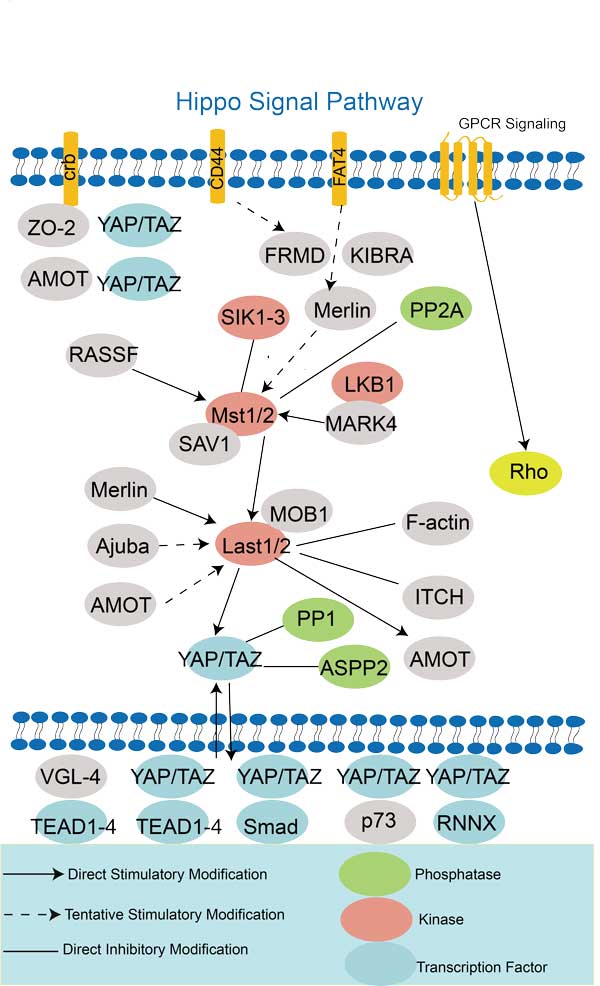ACTA2
-
Official Full Name
actin, alpha 2, smooth muscle, aorta -
Overview
The protein encoded by this gene belongs to the actin family of proteins, which are highly conserved proteins that play a role in cell motility, structure and integrity. Alpha, beta and gamma actin isoforms have been identified, with alpha actins being a major constituent of the contractile apparatus, while beta and gamma actins are involved in the regulation of cell motility. This actin is an alpha actin that is found in skeletal muscle. Defects in this gene cause aortic aneurysm familial thoracic type 6. Multiple alternatively spliced variants, encoding the same protein, have been identified. [provided by RefSeq, Nov 2008] -
Synonyms
ACTA2;actin, alpha 2, smooth muscle, aorta;AAT6;ACTSA;MYMY5;actin, aortic smooth muscle;alpha-cardiac actin;cell growth-inhibiting gene 46 protein
Recombinant Proteins
- Human
- Zebrafish
- Rhesus macaque
- Chicken
- Mouse
- E.coli
- Mammalian Cells
- HEK293
- Wheat Germ
- E.Coli/Yeast
- In Vitro Cell Free System
- Protein Conjugation
- His
- DDK
- Myc
- GST
- Non
- Avi
- Fc
- Flag
Involved Pathway
ACTA2 involved in several pathways and played different roles in them. We selected most pathways ACTA2 participated on our site, such as Vascular smooth muscle contraction, which may be useful for your reference. Also, other proteins which involved in the same pathway with ACTA2 were listed below. Creative BioMart supplied nearly all the proteins listed, you can search them on our site.
| Pathway Name | Pathway Related Protein |
|---|---|
| Vascular smooth muscle contraction | PPP1R14A,CYP4A14,AVPR1A,NPR2,RHOAC,PPP1CC,GNAQ,PPP1CBL,PLCB4,CALM4 |
Protein Function
ACTA2 has several biochemical functions, for example, ATP binding,protein kinase binding. Some of the functions are cooperated with other proteins, some of the functions could acted by ACTA2 itself. We selected most functions ACTA2 had, and list some proteins which have the same functions with ACTA2. You can find most of the proteins on our site.
| Function | Related Protein |
|---|---|
| ATP binding | NUBPL,RET,ABCD3B,SMARCA2,AK4,DNAJA1,PSMC5,LRRK1,GM711,ACTA1A |
| protein kinase binding | CHEK2,CACNB2,WAS,TICAM1,MAML1,CALM2,FAM83E,GDF3,MAG,SNAP91 |
Interacting Protein
ACTA2 has direct interactions with proteins and molecules. Those interactions were detected by several methods such as yeast two hybrid, co-IP, pull-down and so on. We selected proteins and molecules interacted with ACTA2 here. Most of them are supplied by our site. Hope this information will be useful for your research of ACTA2.
MYL12B;ACTN2;TTN;TFAP2A;proB;q8cwh4_yerpe;glsA1;TSC1;UL36;1-phosphatidyl-1d-myo-inositol 4,5-bisphosphate;NS1;URI1;US11;ARAF;VP24;RL1;GABARAPL2;YWHAZ
ACTA2 Related Signal Pathway
Resources
Research Area
Related Services
Related Products
References
- Kurahara, LH; Sumiyoshi, M; et al. Intestinal Myofibroblast TRPC6 Channel May Contribute to Stenotic Fibrosis in Crohn's Disease. INFLAMMATORY BOWEL DISEASES 21:496-506(2015).
- Granata, A; Bernard, WG; et al. Temporal and Embryonic Lineage-Dependent Regulation of Human Vascular SMC Development by NOTCH3. STEM CELLS AND DEVELOPMENT 24:846-856(2015).





